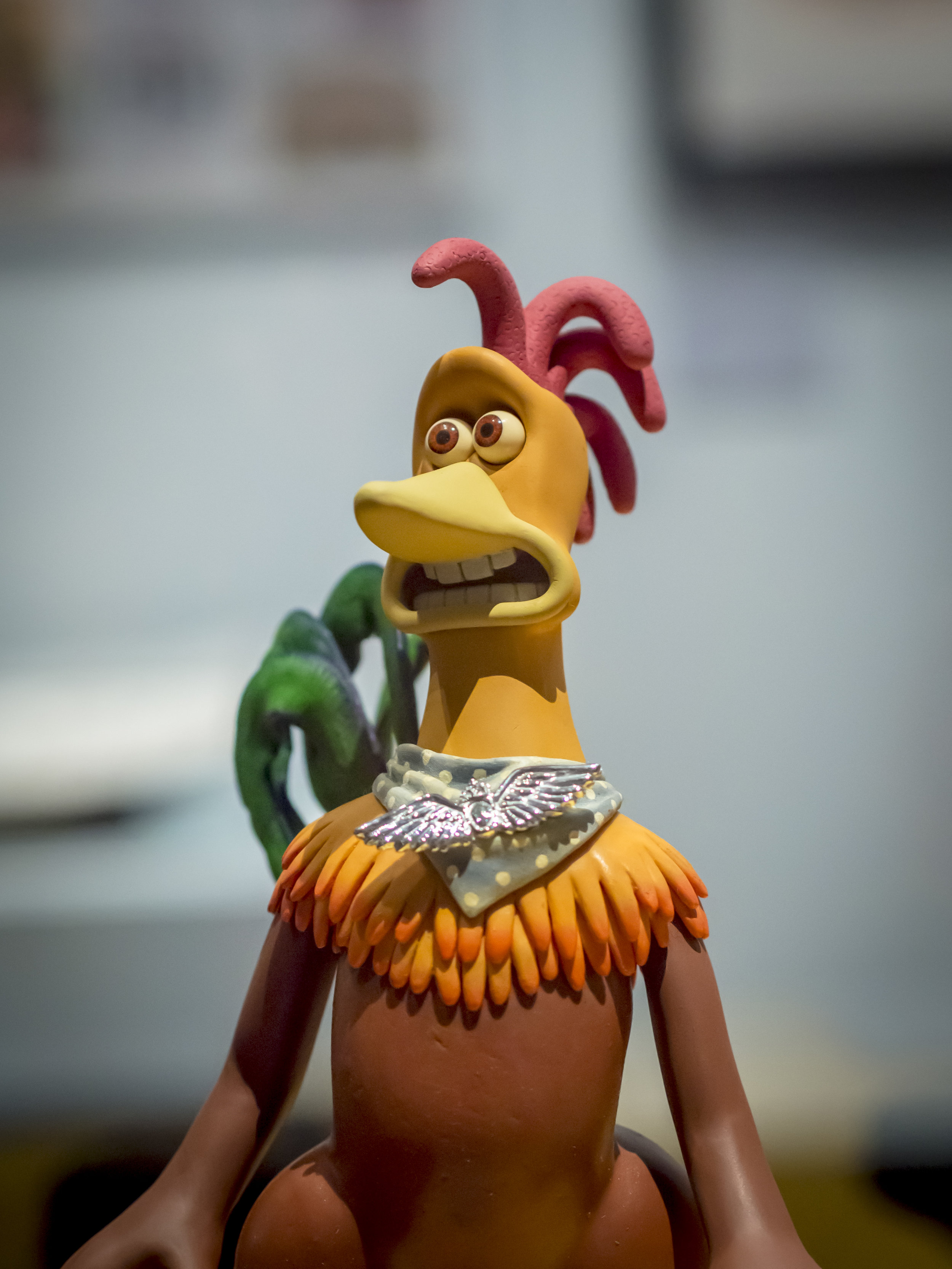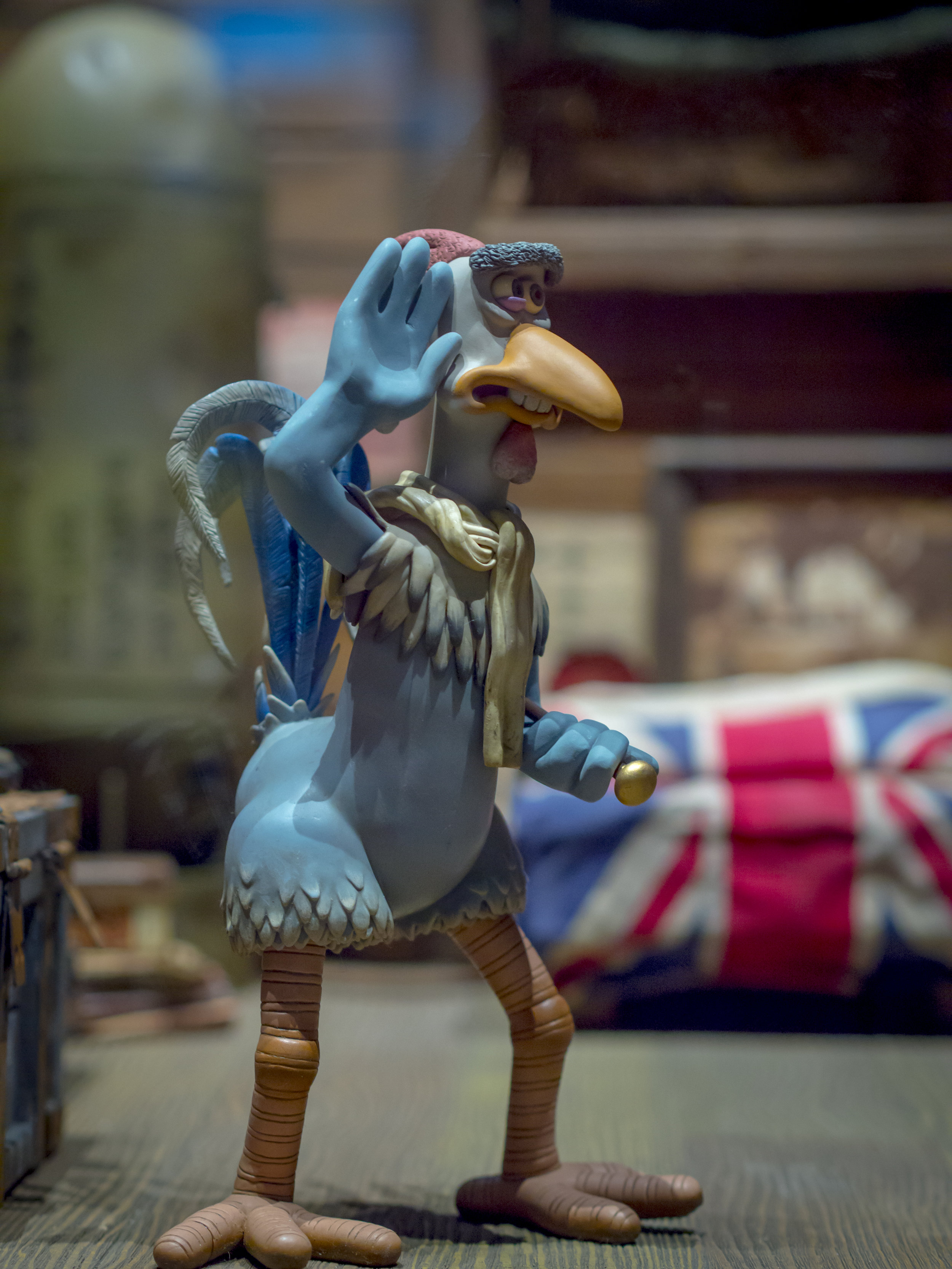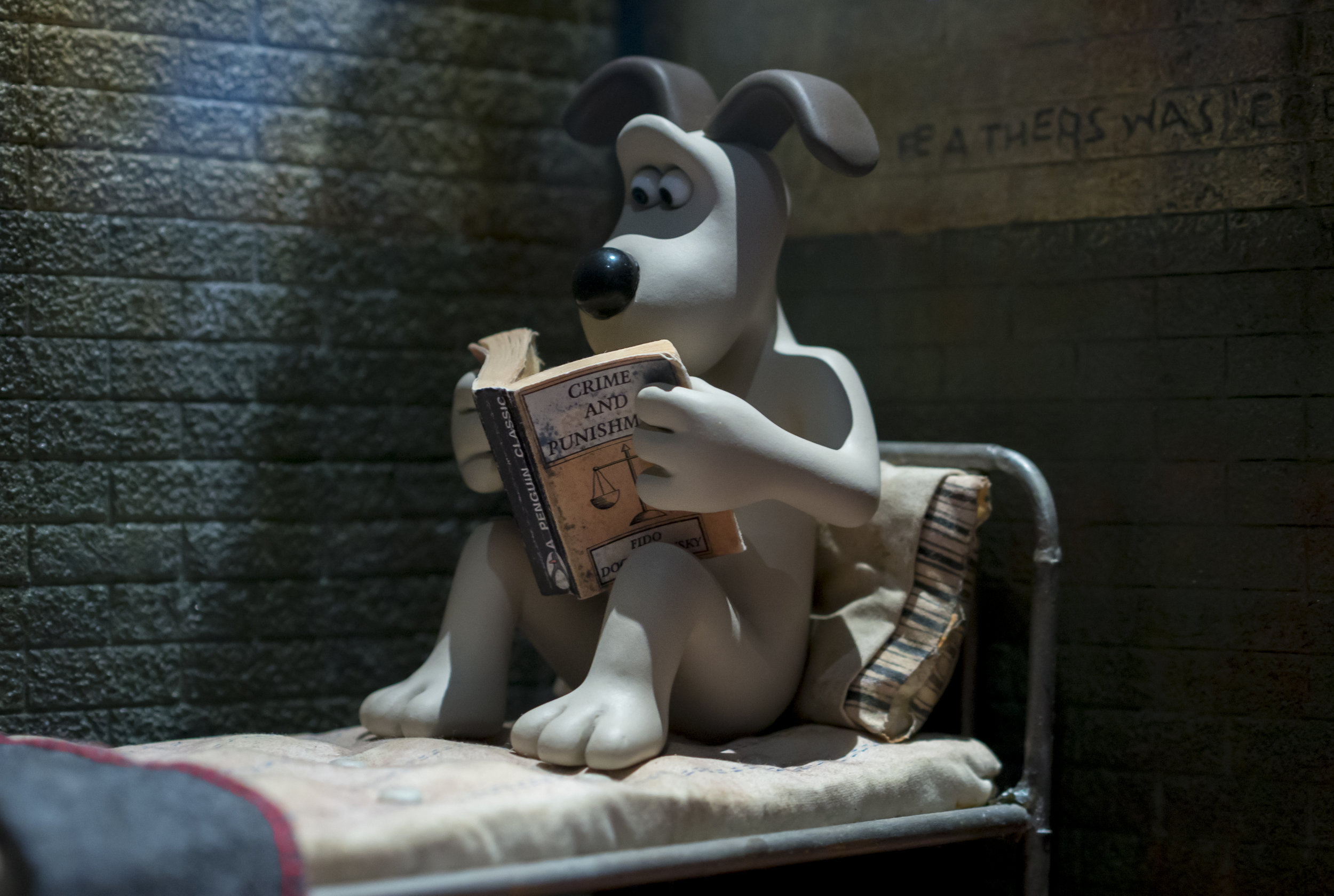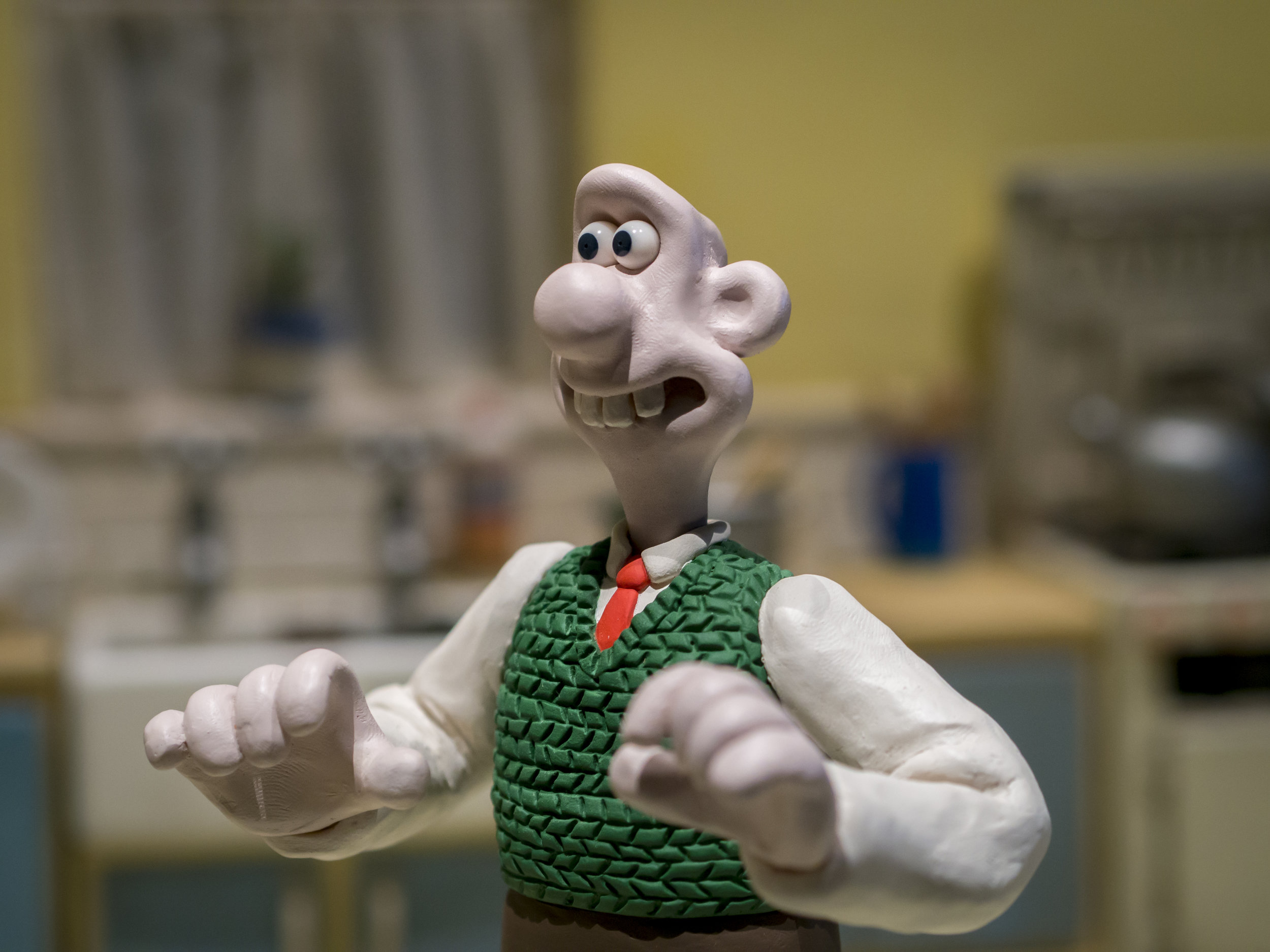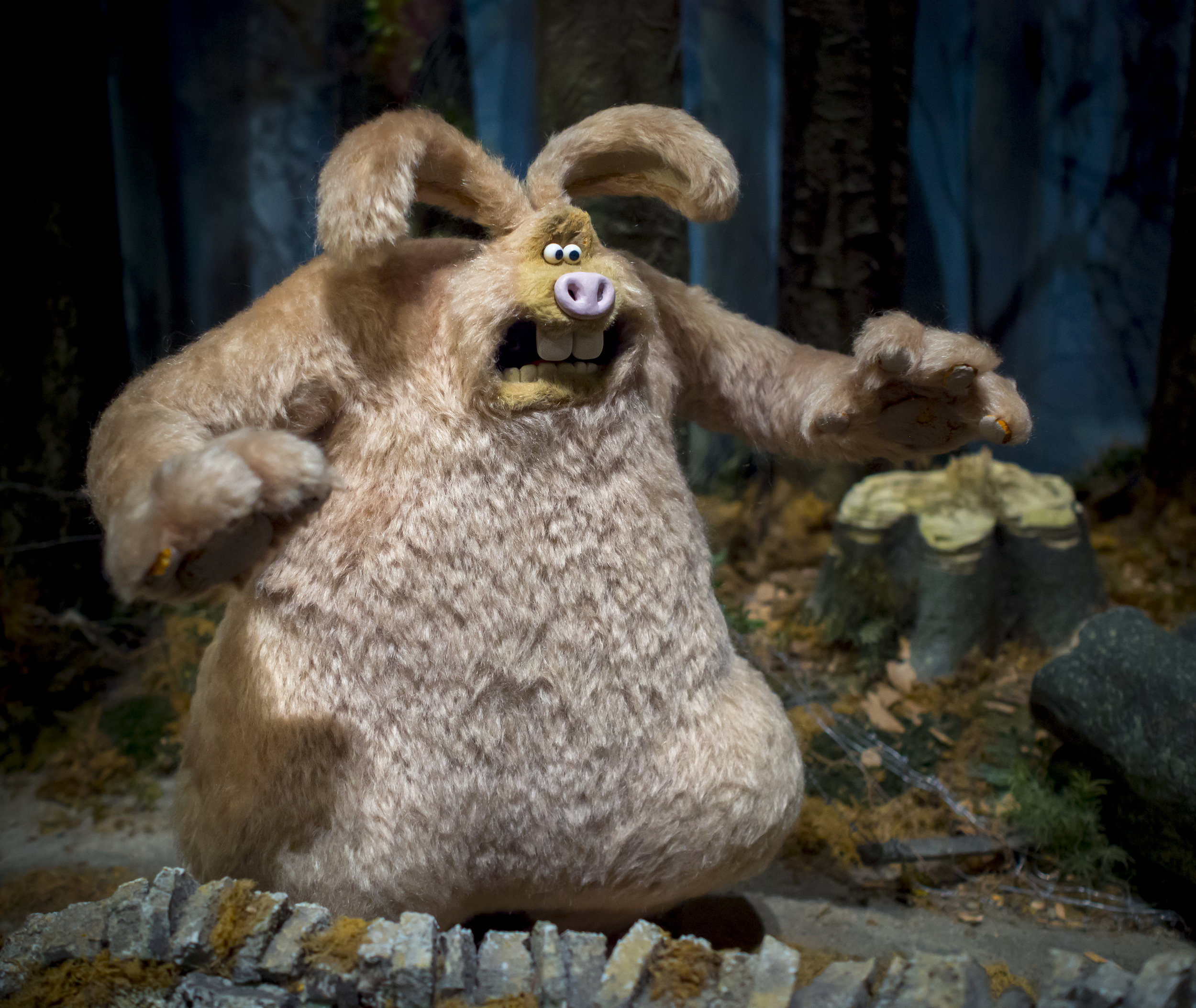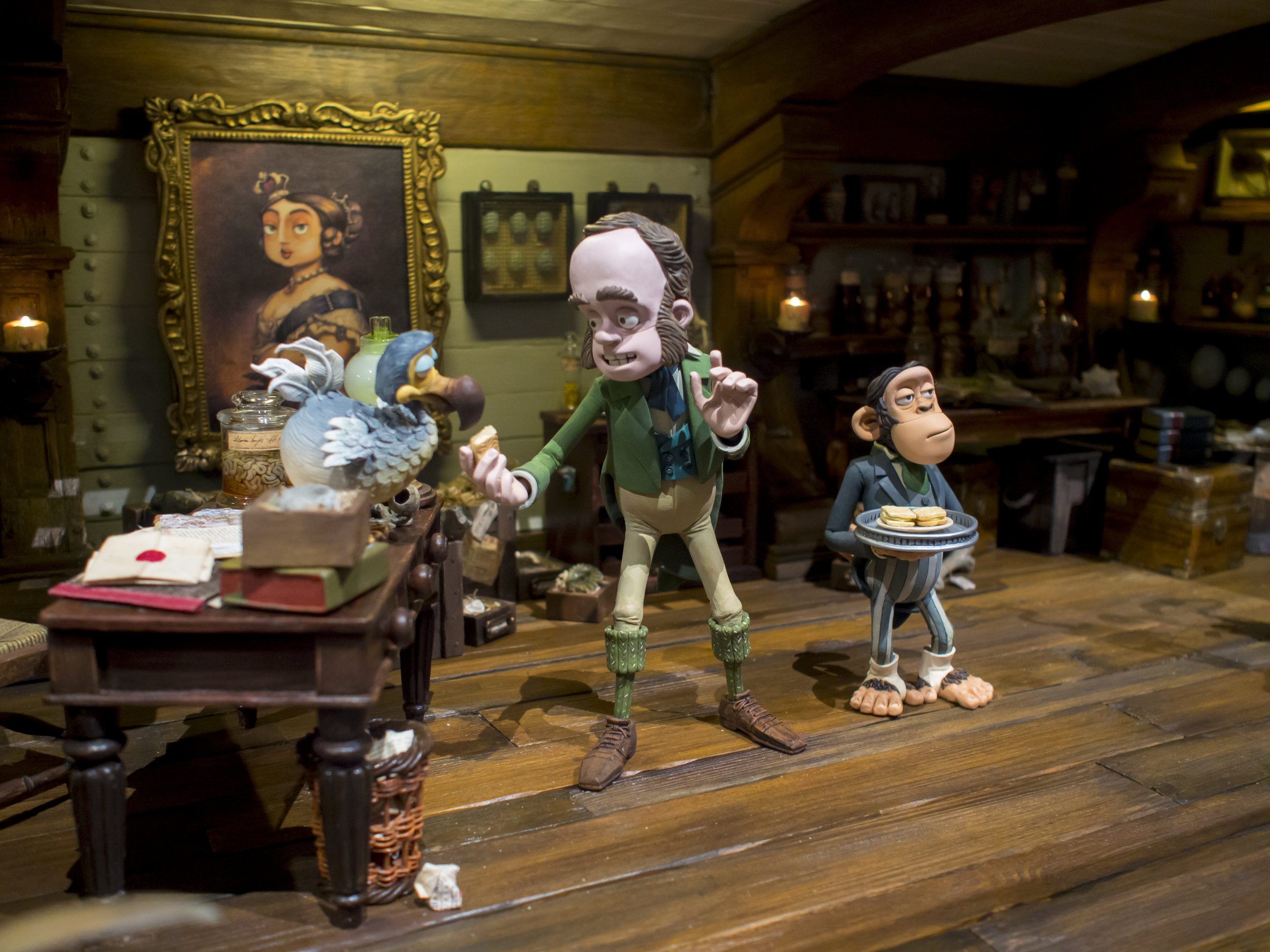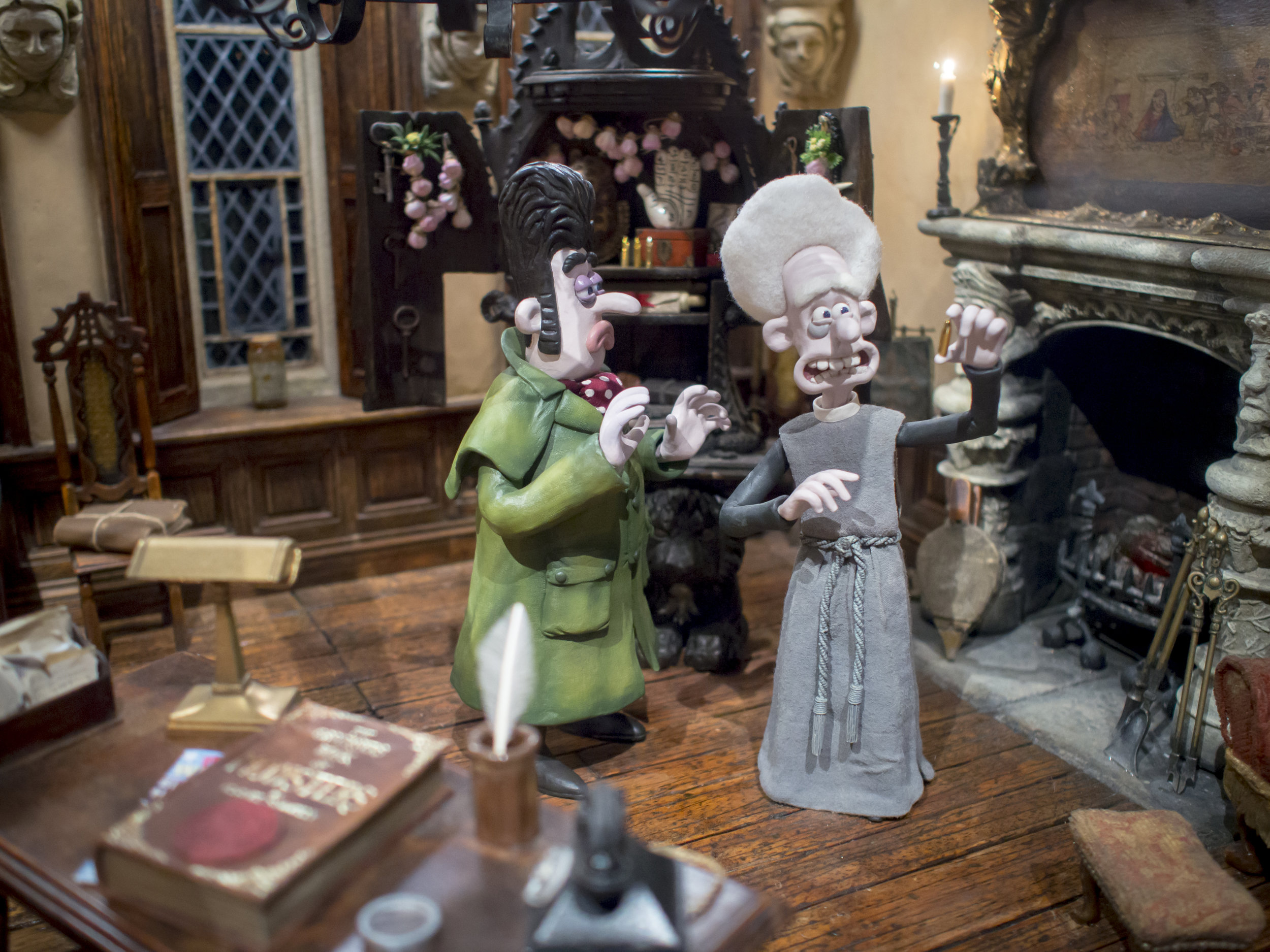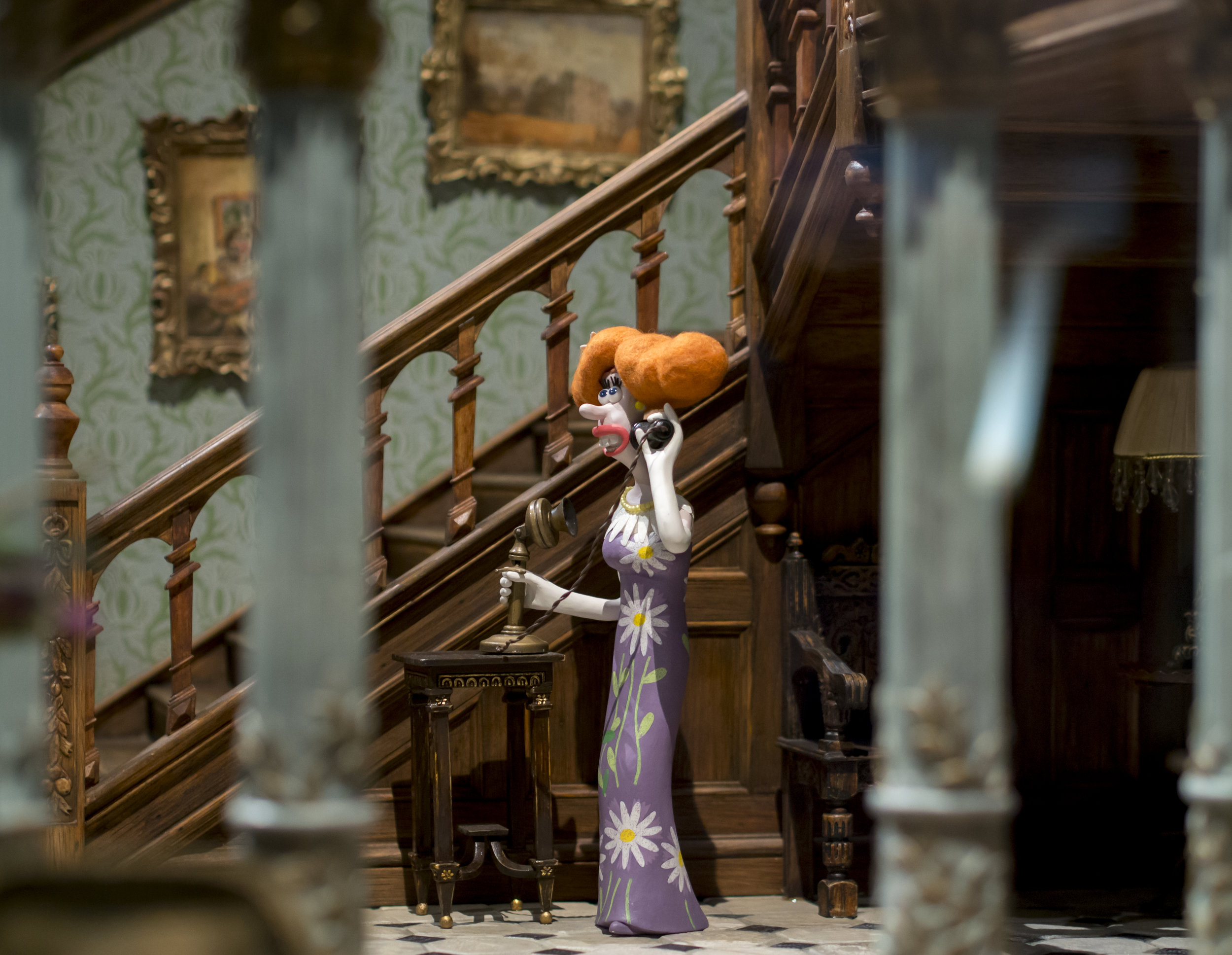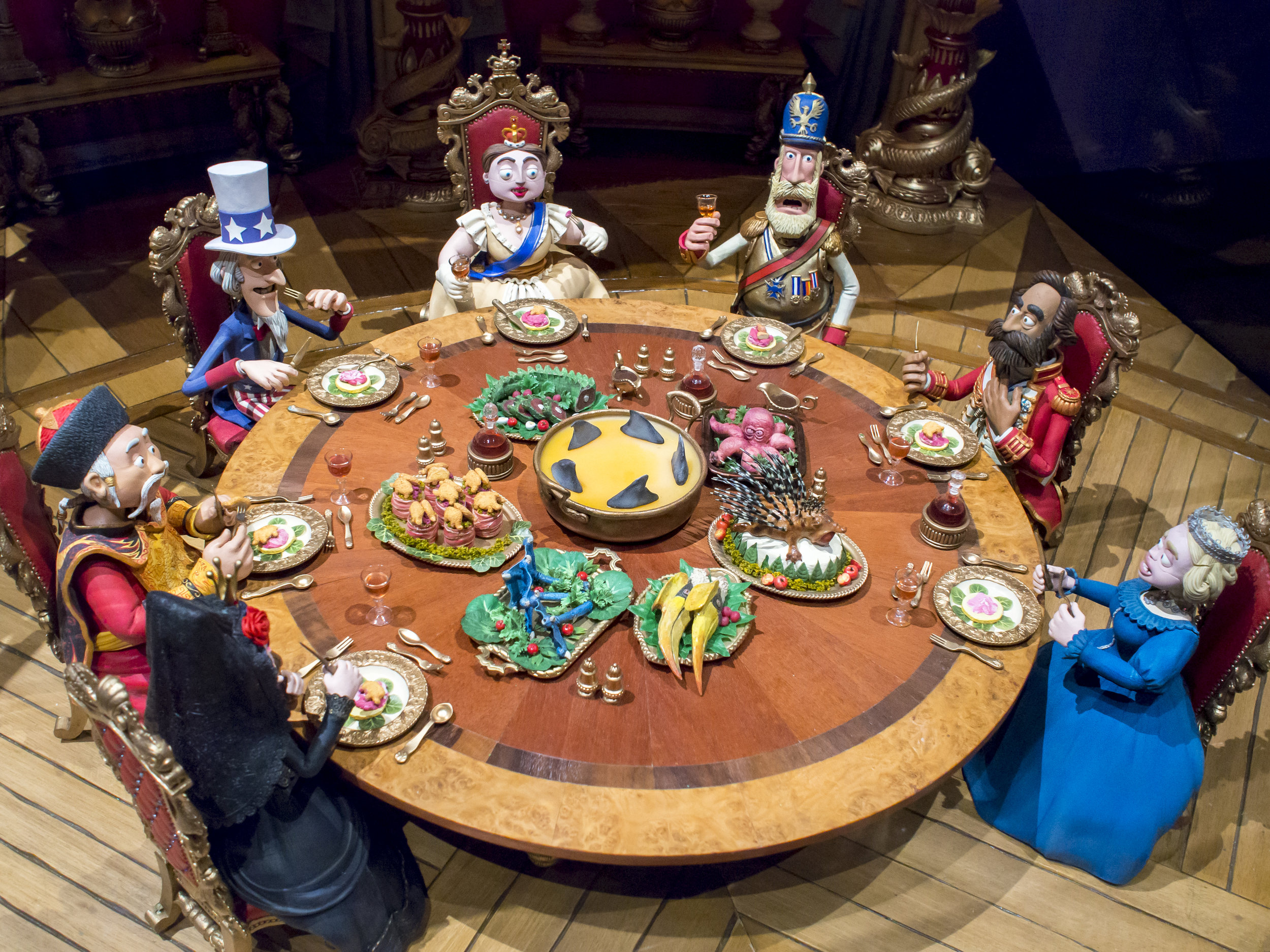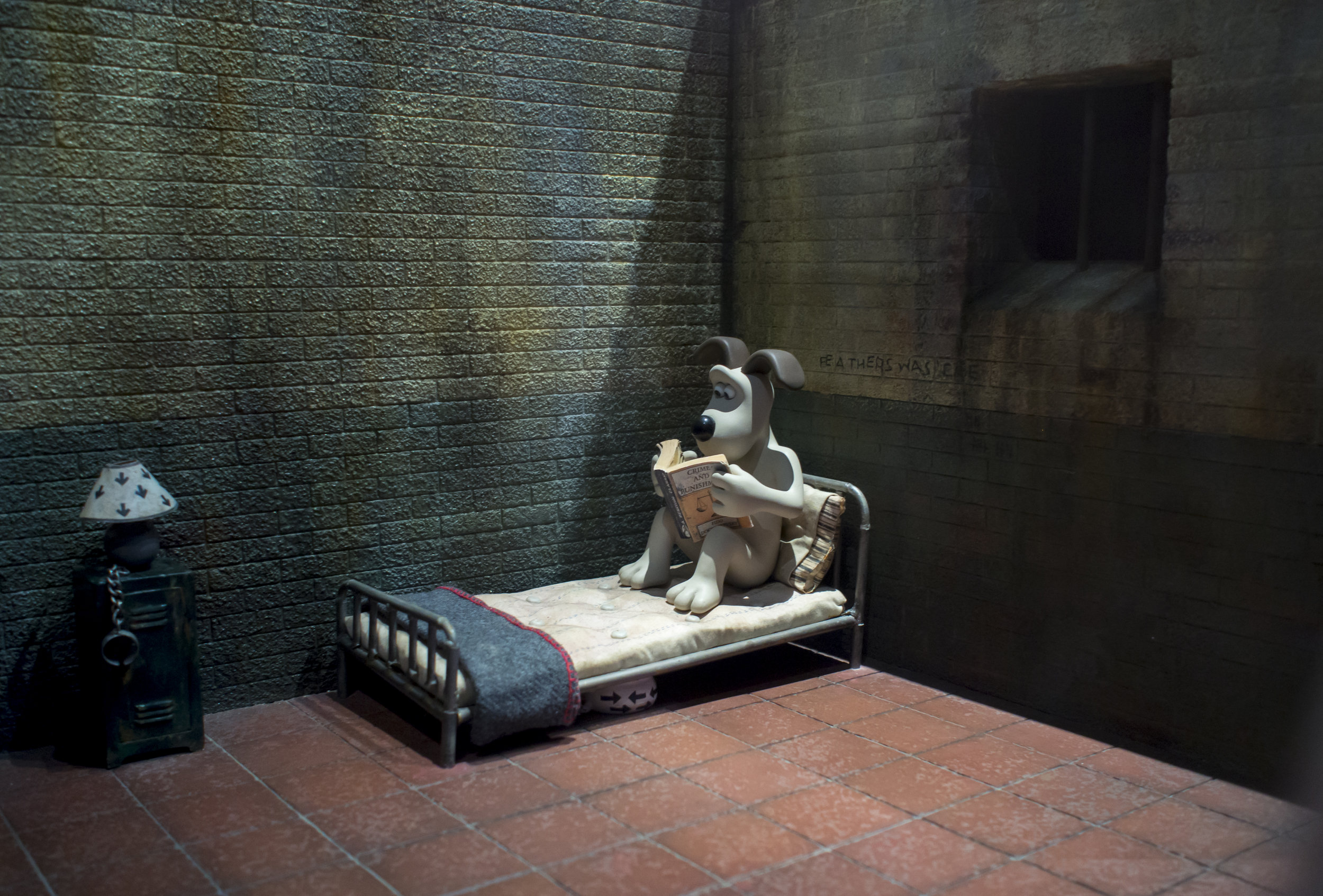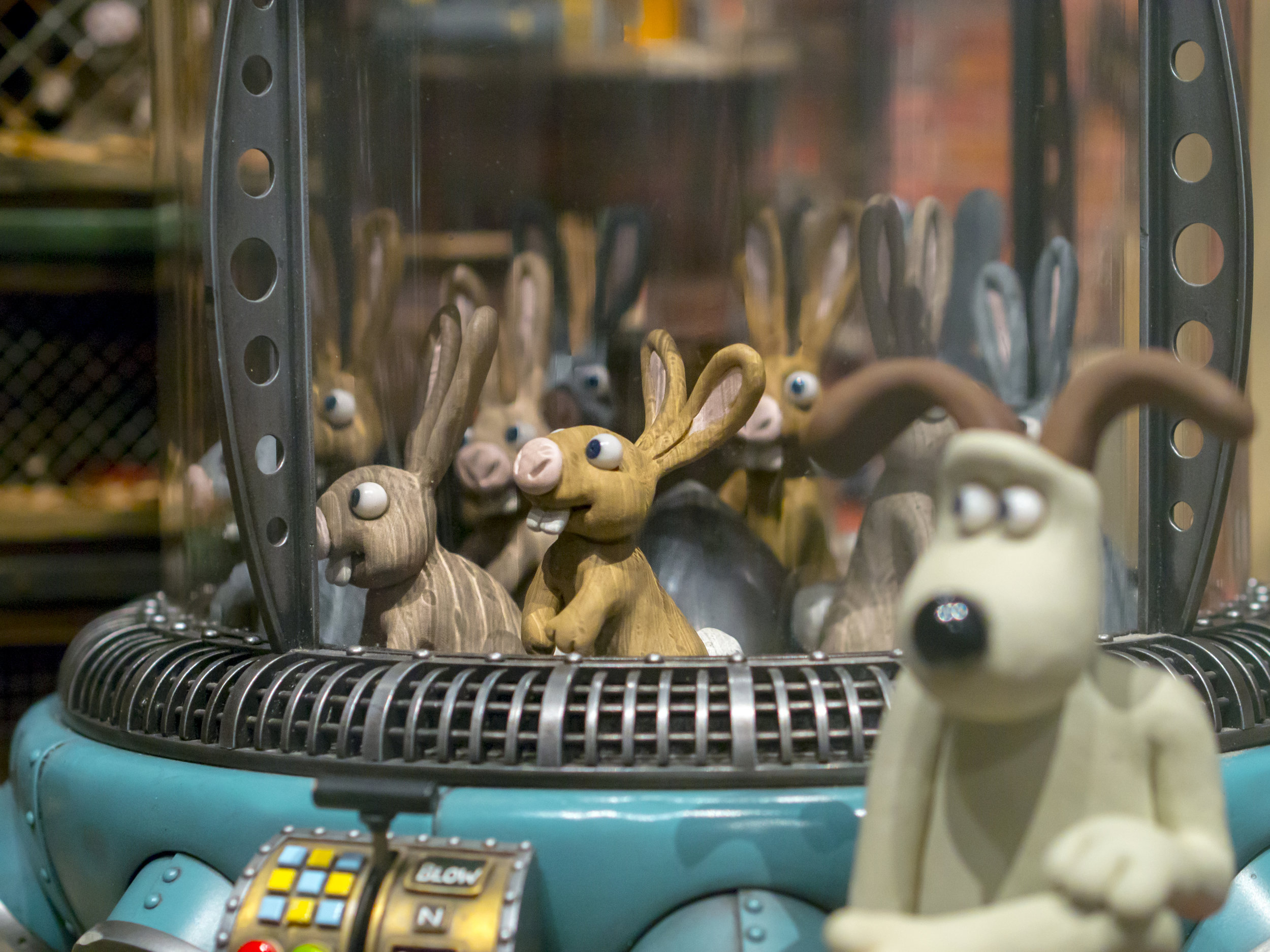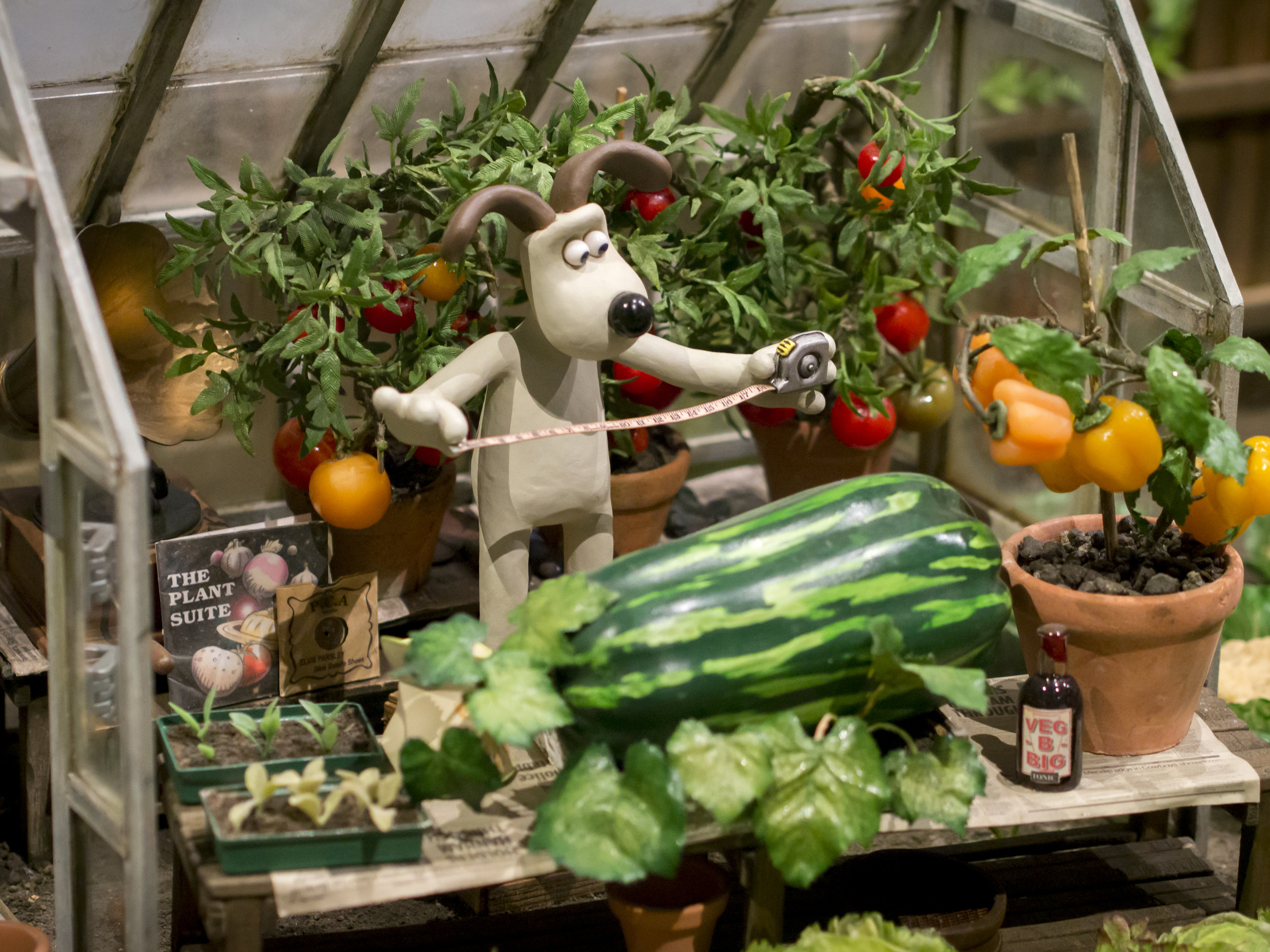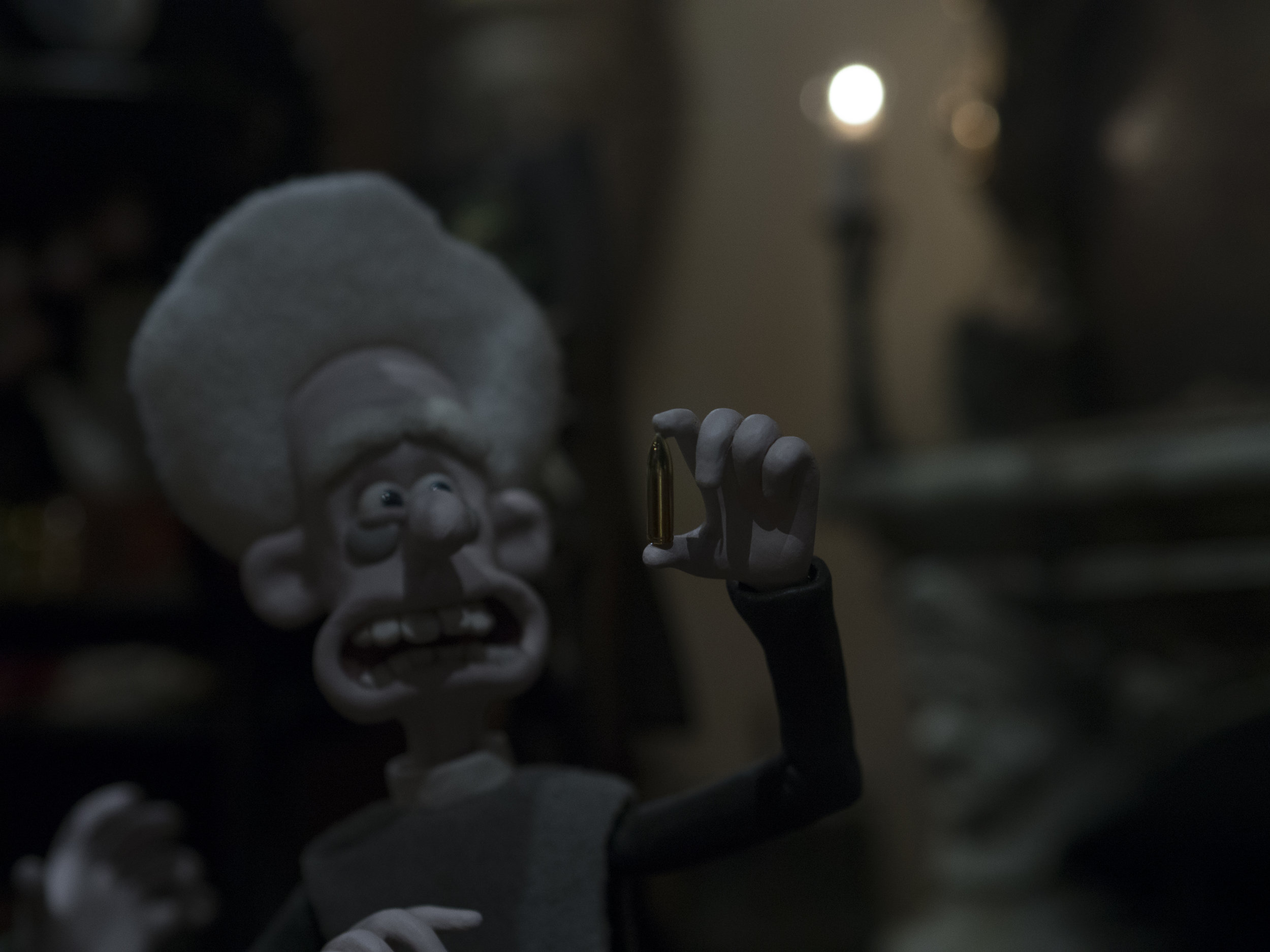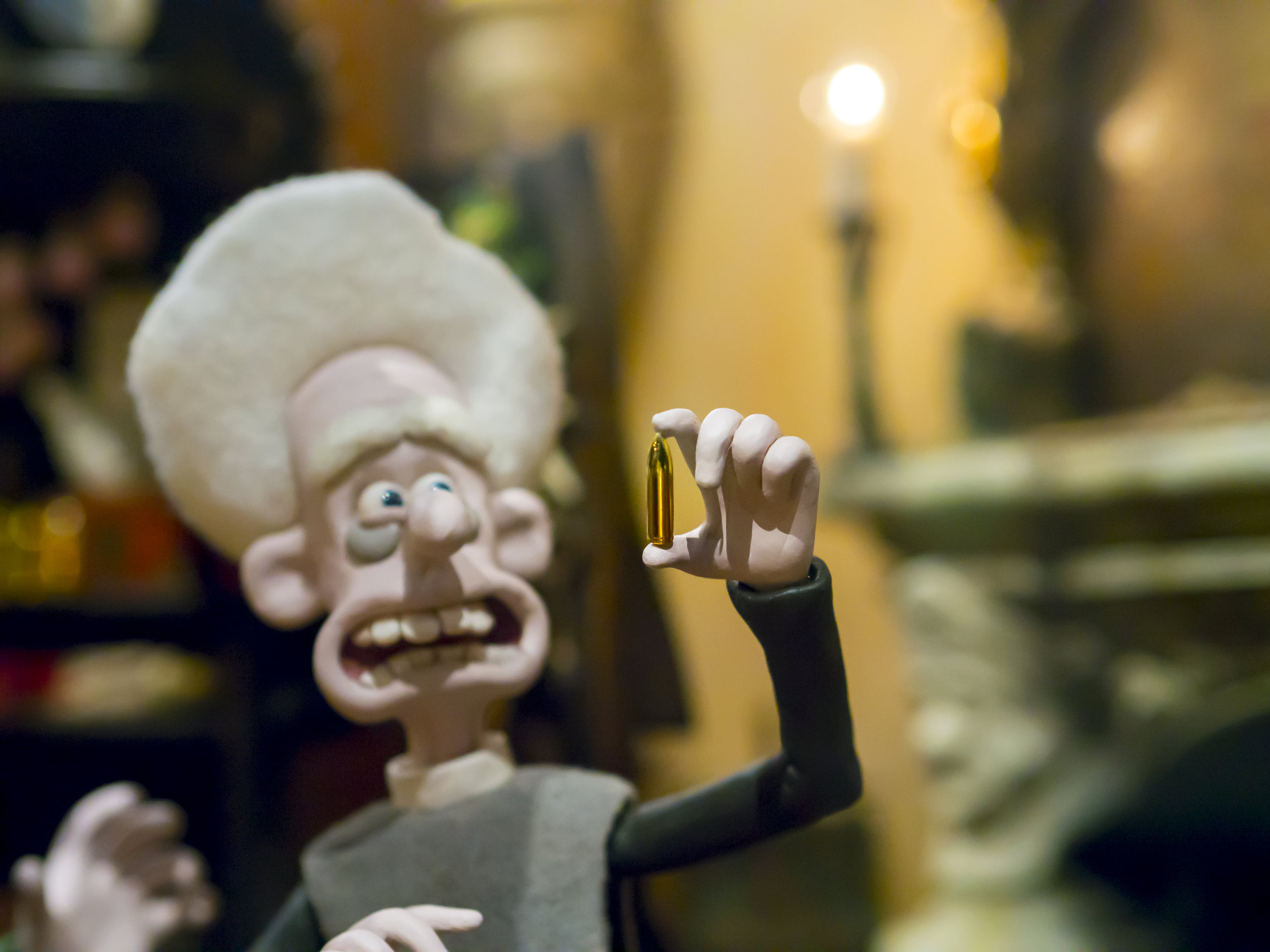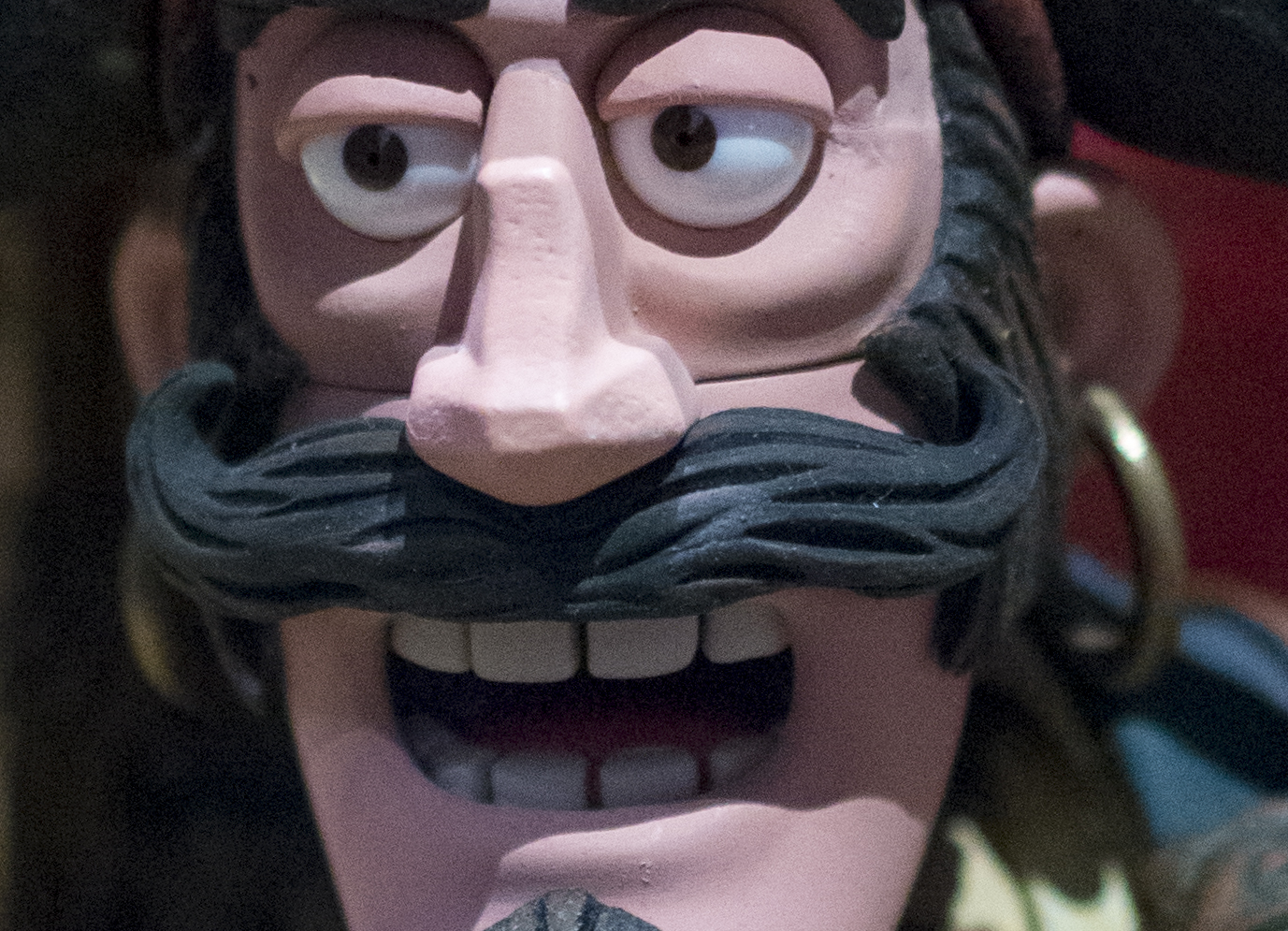Meg and I visited to the Aardman exhibition in Melbourne. The staff were very keen to tell us to "photograph as much as we want, but no flash".
The catch was, of course, the light. The room was very dark, with "mood" (read contrasty) light employed on the models and sets. I shot wide at or near wide open (F1.8-2.8) at ISO 800-1600 and often -1 to -1 1/2 exp comp. I wonder how all of the mobile phones fared?
Some personalities above and below, some of the sets.
The figures ranged in size from a few inches, to almost a foot tall and the pirate ship model was six foot tall and eight foot long!
The figure behind the wheel is about 20cm tall and the ship is complete from stem to stern.
Above miss-exposure is an example of the ability modern digital cameras have to retrieve information from their shadows and why you should always lean that way when in doubt. Lost highlights are often gone, but shadows hold on, although it is often at the expense of image noise. The OMD cameras were ahead of their time at production and are still holding their own today. I especially appreciate their black spot "film grain" noise, that holds detail better than more destructive colour noise.
In the above image (also retrieved from the dark), the first crop has a small amount of colour noise reduction to remove the (rare) "fruit tingles" noise. The second has +60 luminance noise reduction and +50 detail. In large prints, the slight loss of detail is often irrelevant and can be re applied with localised clarity with the brush tool. Having said that, the noise often smooths away in printing, so a lower noise setting of +30 would do. I don't mind a bit of grain myself.
It is best to get where you want in as few steps as possible (all processing is destructive to the original file), so weigh up extra manipulations against doing and undoing in different ways, if one process, less heavily applied will do the job.

